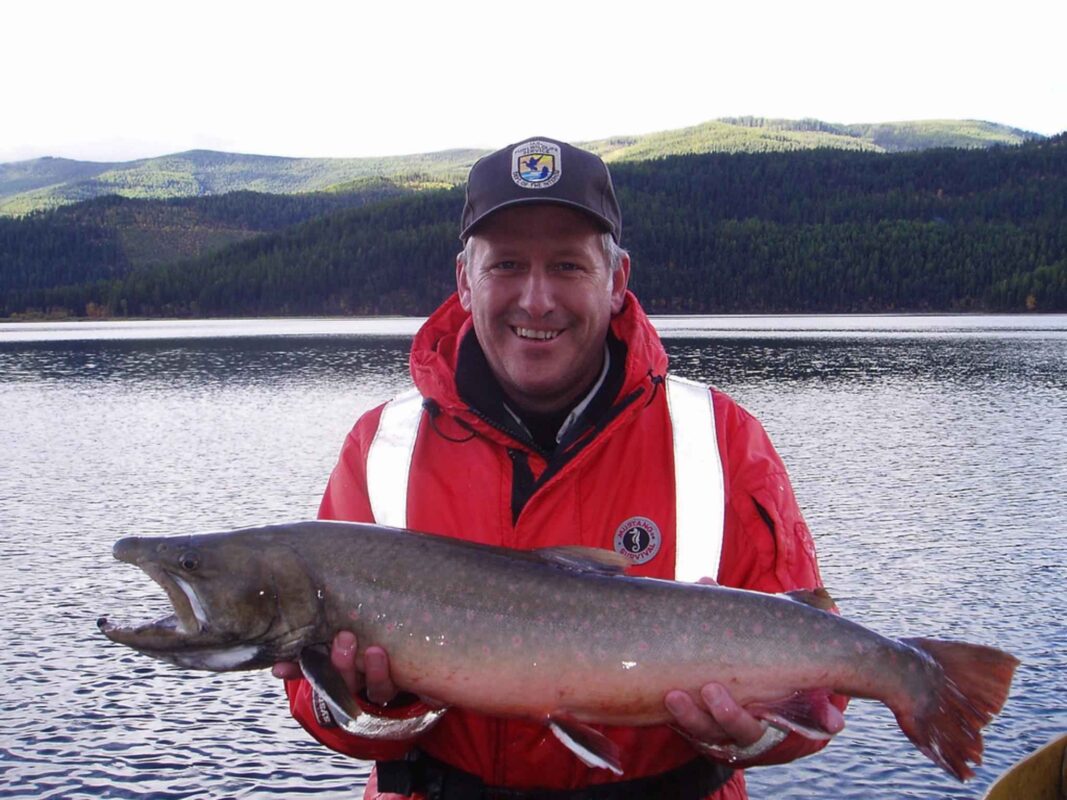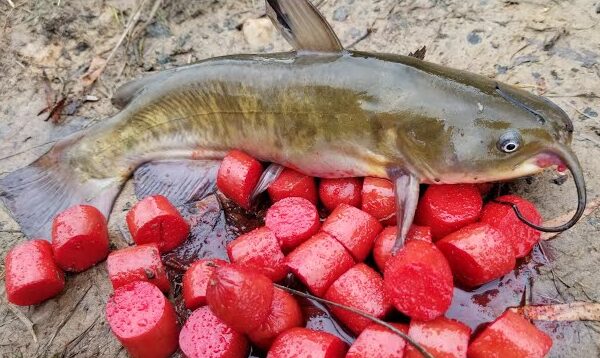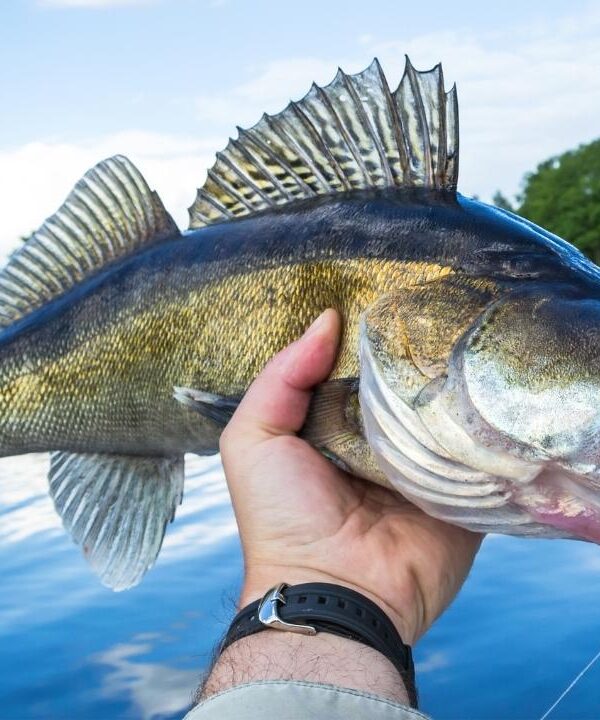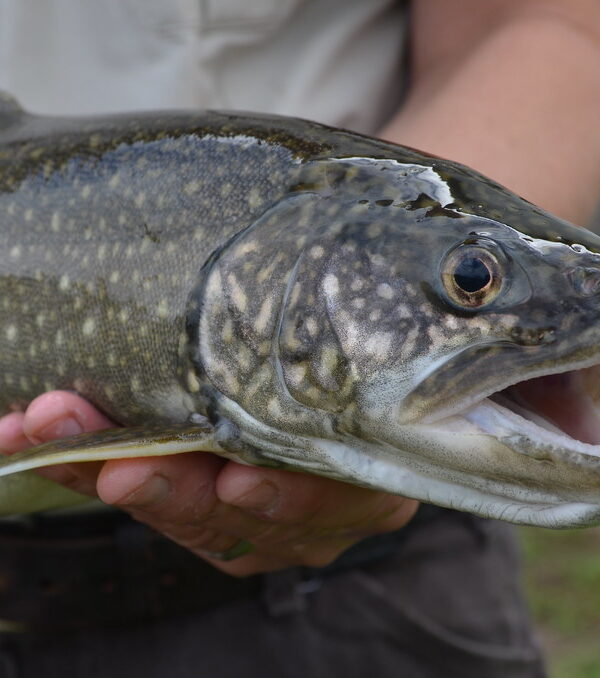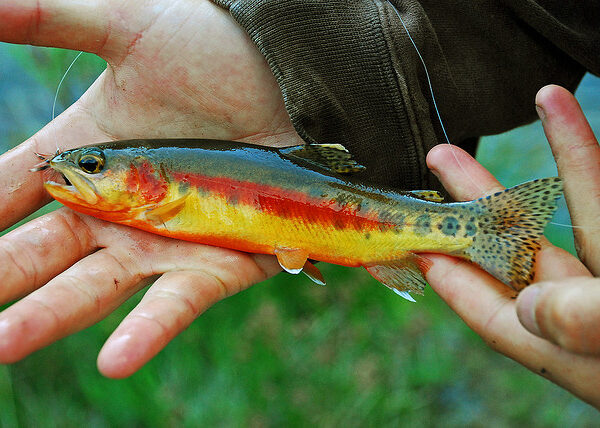Bull Trout
The Majestic Guardian of North America’s Freshwaters
In the vast mosaic of North American freshwater life, the Bull Trout stands out not only for its beauty but also for its ecological importance. As both a sought-after catch for anglers and a key species for conservationists, the Bull Trout offers a profound look into the health and history of our continent’s aquatic systems.
Physical Characteristics of Bull Trout
The Bull’s appearance can be described as both striking and elegant. With a foundation of deep olive or blueish hues, its body is decorated with pale yellow to bright orange spots, standing in vivid contrast against its primary color. Adults can range from a modest 12 inches to an impressive 30 inches in length, depending on the conditions of their habitat.
Distinctive Markings and Jaw
One of the standout features of the Bull Trout is its pronounced jawline. With a lower jaw that projects distinctly beyond its upper counterpart, coupled with a mouth lined with sharp teeth, it’s well-equipped to be a formidable predator. This jaw, combined with its unique color palette, makes it easy for seasoned anglers to differentiate the Bull from other species.
Habitat and Range of Bull Trout
These cold-water aficionados have carved out a niche for themselves in the Pacific Northwest. From the undisturbed streams of Montana to the expansive, deep lakes of Washington, the Bull Trout thrives in waters that maintain a temperature below 60°F
Migration: Driven by Thermal Preferences
Bulls are known to be particularly sensitive to water temperatures. These fish have demonstrated incredible feats of migration, with some traveling over 100 miles just to find colder waters. This intrinsic drive isn’t just an impressive trait but a vital adaptation, enabling their survival amidst changing environmental landscapes.
Life Cycle and Behavior of Bull Trout
A Bull Trout’s life journey is a testament to nature’s marvels. These fish start their life as eggs in the cold gravels of streams, gradually transitioning into ferocious predators. As they grow, they move into bigger water bodies, but they display a unique ability to locate and return to their natal streams for spawning.
Predation: Maintaining the Balance
Adopting a carnivorous diet as they grow, Bull Trout feed voraciously on other fish. Their role as apex predators is vital for the health of freshwater ecosystems. By controlling populations of smaller fish, they help maintain ecological balance and ensure the stability of their habitats.
Techniques for Landing a Bull Trout
Catching a Bull is often considered a feather in the cap for many anglers. Armed with knowledge about the fish’s habits and preferences, one can increase their chances of a successful catch. Natural baits, especially smaller fish, are often the go-to choice
Fly Fishing: Dance of the Streamer
Fly fishing is often the method of choice when pursuing Bull. The delicate art of mimicking prey, especially using streamer flies, requires patience and skill but promises an unparalleled fishing experience.
Bull Trout’s Crucial Ecosystem Role
Bull Trout’s position at the top of the food chain means they play a pivotal role in maintaining the health and balance of freshwater systems. Their predatory habits keep in check potential overpopulation of other species, ensuring the overall health and diversity of their habitats.
Conservation: Challenges and Hope for the Bull Trout
Regrettably, the Bull Trout faces a gauntlet of challenges. From the ever-present threat of climate change, which warms their cold-water homes, to habitat loss due to human activities, their survival is at risk. Recognizing this, numerous conservation initiatives are underway. These include habitat restoration projects and sustainable fishing practices, all striving to ensure the Bull Trout remains a vital part of North America’s aquatic tapestry.
In our journey through the world of aquatic life, the Bull Trout serves as a poignant reminder. It’s not just about the beauty and diversity of nature but also about the delicate balance that sustains ecosystems and our role in preserving it.

